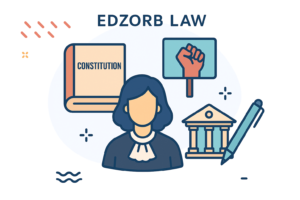Out with the old, in with the bold! The Bharatiya Sakshya Adhiniyam (BSA), 2023 is not just a law; it’s a reimagination of justice in the digital age. Replacing the 151-year-old Indian Evidence Act (IEA), 1872, this landmark legislation ushers in a new era, embracing the tech-driven realities of today’s world.
For those preparing for judiciary exams, practicing law, or simply curious about India’s evolving legal landscape, the BSA is essential reading.
What’s Changed? A Quick Glimpse
| 📌 Topic | 📜 IEA, 1872 | ⚖️ BSA, 2023 |
|---|---|---|
| Expert Opinion | Limited to certain fields (Section 45) | Any field needing expert analysis (Section 39) |
| Language Use | Terms like “lunatic” (Section 118) | Inclusive terms like “person of unsound mind” (124) |
| Definition of Documents | No mention of digital records | Includes electronic/digital records (2(d)) |
| Definition of Evidence | Narrow scope | Covers electronic statements (2(e)) |
| Estoppel | Ends with tenancy | Continues after tenancy ends (Section 122) |
| Judicial Notice | No provision for treaties | Mandatory notice of international treaties (52) |
| Secondary Evidence | Very limited | Includes oral/written admissions & expert exams (58) |
| Ministerial Communications | No explicit protection | Protected from court production (165 – Proviso) |
Highlights You Can’t Miss

Experts Beyond Science & Art
- Old Law: Expert opinions were allowed only in narrow domains like handwriting or fingerprints.
- New Law: Experts from any field can now be consulted, cyber forensics, digital marketing analytics, AI? Absolutely! 🎯
Bye-Bye Archaic Language
- Old Law: Called people “lunatics.”
- New Law: Respects mental health with modern, dignified terminology like “a person of unsound mind.”
Digital Evidence? Yes, Please!
- Old Law: Didn’t know what to do with emails, WhatsApp chats, or Zoom recordings.
- New Law: All digital and electronic records are recognized, valid, and admissible in court.
Electronic Evidence = Legit Evidence
- Before: Too many hurdles.
- Now: Section 61 ensures digital evidence can’t be dismissed just because it’s digital.
Estoppel Goes Further
- Old Rule: Tenants could only be barred from denying a landlord’s title during tenancy.
- New Rule: Now, tenants can’t deny it even after tenancy ends.
India, The Global Player
The BSA directs courts to take judicial notice of India’s international treaties and global commitments, a nod to our growing global influence
Wider Net for Secondary Evidence
Now, the Bharatiya Sakshya Adhiniyam (BSA), 2023 includes provisions for oral and written admissions, expert reviews, and more, significantly expanding the scope of evidence. This makes it easier to prove your case without needing the original document, offering a more flexible approach to evidence in court.
Ministers Get Privacy Too
A new protection under the Bharatiya Sakshya Adhiniyam (BSA), 2023 shields communications between Ministers and the President from court disclosure, ensuring high-level confidentiality. This ensures that sensitive government discussions remain protected, preserving the integrity of executive-level decision-making.
Why This Matters for YOU

- Law students & aspirants: Expect fresh questions in exams!
- Legal professionals: Embrace digital workflows & e-courtroom prep.
- General readers: Understand how justice is evolving in YOUR world.
Final Thoughts
The Bharatiya Sakshya Adhiniyam, 2023 is more than an update, it’s a paradigm shift. It speaks the language of the 21st century: inclusive, digital, and globally conscious. While rooted in the values of justice, it no longer leans on colonial templates.
The Edzorb Law is no longer a relic; it’s a reflection of modern India.

 Podcast
Podcast








 Features
Features






